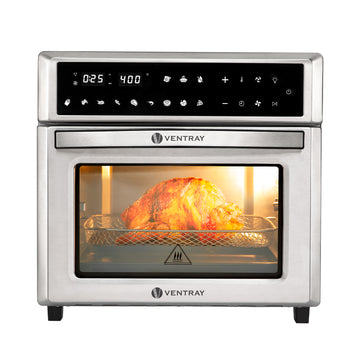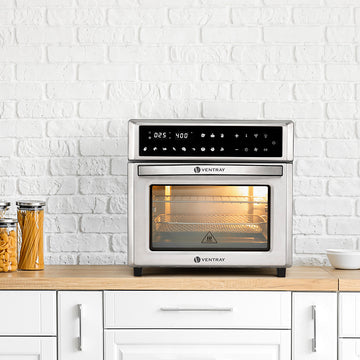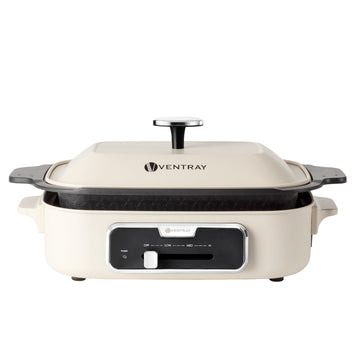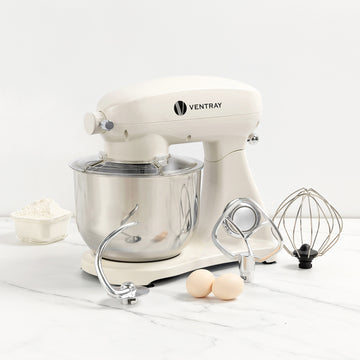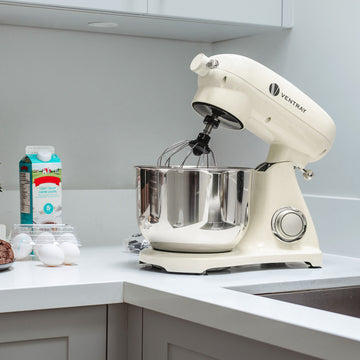Which is Better: Horizontal or Vertical Masticating Juicers?
Which is Better: Horizontal or Vertical Masticating Juicers?
Which is Better: Horizontal or Vertical Masticating Juicers?
Selecting the right masticating juicer can be a pivotal decision for health enthusiasts and culinary aficionados alike. The choice between horizontal and vertical masticating juicers is not merely about design preference but involves understanding their functional differences and suitability to individual juicing needs.
Understanding Masticating Juicers
Masticating juicers, distinguished by their cold press or slow juicing technique, operate through a slow, grinding process. This method, as opposed to the high-speed spinning of centrifugal juicers, preserves more nutrients and enzymes, leading to healthier and longer-lasting juice. For an insightful beginner’s guide to these juicers, Ventray's comprehensive Understanding Masticating Juicers is an excellent resource.
Horizontal Masticating Juicers
These juicers are lauded for their versatility. Beyond juicing a variety of fruits and vegetables, they can process leafy greens, wheatgrass, and even nuts for butter and milk. Their design typically includes a longer auger, aiding in effective extraction and simplified cleaning.
Horizontal masticating juicers shine in their multi-functionality. Many models are equipped with attachments for grinding coffee, mincing herbs, and pasta making.
However, their horizontal layout does consume more counter space and may have a slower juicing process compared to vertical models. They also require more preparation as ingredients need to be cut into smaller sizes.
For more information on the functionalities and benefits of horizontal juicers, Healthline provides a comprehensive overview.
Vertical Masticating Juicers
Vertical juicers are known for their space-saving design and efficient juicing of softer produce. The vertical setup leverages gravity in the juicing process, enhancing speed and efficiency.
These juicers often feature larger feed chutes, reducing prep time with the ability to accommodate bigger produce pieces. They're ideal for smaller kitchens or for those preferring a compact appliance.
Yet, vertical juicers might not match the versatility of horizontal models, particularly with leafy greens and wheatgrass.
A detailed comparison of vertical and horizontal juicers can be found in this insightful article by Juicing Journal, which highlights key differences and user considerations.
Choosing the Best Masticating Juicer
Your choice should align with your juicing preferences and kitchen space. If versatility and handling a broad range of ingredients are priorities, a horizontal masticating juicer is advisable. Ventray's guide on Choosing the Best Masticating Juicer offers further insights.
Conversely, for those with limited space or a preference for juicing softer fruits and vegetables with minimal preparation, a vertical masticating juicer is more suitable.

Additional Considerations
Other factors to consider include ease of cleaning, noise level, price, and warranty. Ideal masticating juicers should be user-friendly in terms of assembly, usage, and cleaning. Noise levels are also a critical factor for frequent use.
Ventray’s range of masticating juicers, accessible through their juicers collection, offers various options catering to different needs.
Conclusion
In conclusion, the choice between horizontal and vertical masticating juicers hinges on personal juicing habits, space considerations, and desired features. Regardless of the type, investing in a quality masticating juicer paves the way for a healthier lifestyle with fresh, nutrient-rich juices. The ideal juicer is one that seamlessly integrates into your daily routine, enhancing your culinary experience.
